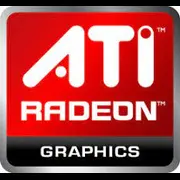ATI FirePro V7900 SDI

ATI FirePro V7900 SDI in 2025: A Professional Tool in the Age of New Technologies
Overview of Capabilities, Performance, and Target Audience
Introduction
Despite the rapid development of GPUs, some professional solutions remain in demand even years after their release. The ATI FirePro V7900 SDI, launched in 2011, is a prime example of a "long-liver" in niche tasks. In 2025, this card does not compete with modern giants in gaming or machine learning, but it maintains its position in specific professional fields. Let's explore why it is still relevant.
1. Architecture and Key Features
Architecture: The FirePro V7900 SDI is based on the TeraScale 3 microarchitecture (also known as VLIW5), developed by AMD for professional workstations.
Manufacturing Process: 40 nm—archaic by 2025 standards, where 5–7 nm processes dominate.
Unique Features:
- SDI Outputs: Support for Serial Digital Interface (SDI) is a key feature for integration into professional video interfaces (broadcasting, studio equipment).
- ECC Memory Support: Ensures stability during rendering and computations.
- Optimization for Professional Software: Certified for Autodesk Maya, SolidWorks, and Adobe Premiere Pro.
Lack of Modern Technologies: No analogs of RTX, DLSS, or FidelityFX. Hardware ray tracing and AI accelerators are not supported.
2. Memory: Modest but Sufficient for Its Tasks
- Memory Type: GDDR5.
- Capacity: 2 GB—critically low for modern gaming, but sufficient for basic editing tasks or CAD models from the 2010s.
- Bus and Bandwidth: A 256-bit bus provides 153.6 GB/s. This is enough for video work at resolutions up to 4K (in 2010s formats), but rendering complex 3D scenes will be challenging.
Impact on Performance: In professional applications, GDDR5 memory handles the load thanks to driver optimization, but multitasking is limited.
3. Gaming Performance: Not Its Main Specialty
The FirePro V7900 SDI was not designed for gaming, but by 2025, it can be considered an exotic option for retro gaming:
- CS:GO (1080p, low settings): ~45-60 FPS.
- Skyrim (1080p, medium): ~30 FPS.
- GTA V (720p, minimum): ~25-35 FPS.
Ray Tracing: Not supported.
Conclusion: The card is unsuitable for modern projects but may work for older games or 2D applications.
4. Professional Tasks: Its Primary Niche
- Video Editing: With SDI outputs and support for 10-bit color, the card is used in editing archival footage or broadcasting (e.g., for retransmitting old recordings).
- 3D Modeling: Compatibility with AutoCAD and SolidWorks allows work on small projects, but complex scenes require more modern solutions.
- Scientific Calculations: Limited support for OpenCL 1.2 (not compatible with current versions). Suitable for simple simulations, but CUDA acceleration is not available.
Important: Programs from 2025 may not support the FirePro V7900 SDI due to outdated drivers.
5. Power Consumption and Heat Dissipation
- TDP: 150W—modest even for 2025.
- Cooling: Turbine with active cooling. Noise level—up to 38 dB under load.
- Recommendations:
- Case with ventilation on the rear panel.
- Avoid using in compact PCs: requires at least 1 slot for cooling.
6. Comparison with Competitors
In 2025, the FirePro V7900 SDI competes only in the used market:
- NVIDIA Quadro 4000 (2010): Similar performance, but without SDI outputs.
- AMD Radeon Pro WX 3100 (2017): A modern equivalent with 4K support and HDMI 2.0, but new devices start at $200.
Modern Alternatives:
- NVIDIA RTX A2000 (2021): 12 GB GDDR6, ray tracing, price from $450.
- AMD Radeon Pro W6600 (2021): 8 GB GDDR6, PCIe 4.0 support, from $649.
Conclusion: The FirePro V7900 SDI is relevant only under strict budget constraints or the need for SDI interface.
7. Practical Recommendations
- Power Supply: 400–500W with an 80+ Bronze certification.
- Compatibility: Requires PCIe 2.0 x16. Works on motherboards with PCIe 4.0/5.0, but with speed limitations.
- Drivers: Use the latest version of AMD FirePro (released in 2018). Conflicts possible with Windows 10/11.
8. Pros and Cons
Pros:
- Reliability and longevity.
- SDI outputs for professional video.
- Low price on the secondary market ($50–80).
Cons:
- Outdated architecture.
- Lack of support for modern APIs and drivers.
- Limited memory capacity.
9. Final Conclusion: Who is the FirePro V7900 SDI Suitable For?
This graphics card is a specialized tool for:
- Engineers and editors working with outdated software requiring SDI interface.
- Retro hardware enthusiasts assembling PCs to run old programs or games.
- Budget studios where equipment cost is critical.
In 2025, the FirePro V7900 SDI is a choice not for performance, but to solve specific tasks where compatibility with specialized equipment is essential. For most users, modern alternatives are preferable, but in its niche, this card remains a workhorse.
Basic
Memory Specifications
Theoretical Performance
Miscellaneous
Benchmarks
Compared to Other GPU
Share in social media
Or Link To Us
<a href="https://cputronic.com/en/gpu/ati-firepro-v7900-sdi" target="_blank">ATI FirePro V7900 SDI</a>